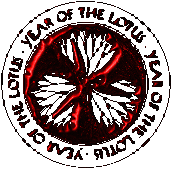Little Asia
Overview
Demography: Little Asia boasts approximately accounted 57,000 residents spread throughout the tightly-woven district and another 3,000 unknown are estimated to have immigrated illegally.
Ethnicity: 45% Chinese, 30% Japanese, 10% Korean, 7% Southeast Asian, 6% Indian, 1% Polynesian, 1% Other
Religion: 55% Buddhist, 15% Protestant, 10% Catholic, 5% Hindu, 5% Shinto, 5% Muslim, 5% Taoism/Confucianism
Culture: Little Asia in its ethnic diversity and urban isolation has created a fair blend of cultural activities and entertainment. Several amphitheaters/dance halls are host to a variety of ethnic traditions of dancing, theater, and performance such as n’oh and kabuki. Little Asia also holds a Museum of Art & History and a public zoo. A great number of different restaurants boasting varied ethnic menus are all over the district. Although the martial arts are a big part of Asian culture, only two major schools are located in Little Asia. But both schools altogether have several hundred members. There are also two major night clubs in Little Asia, both fairly new and “avant-garde”, and open to anyone who likes their styles. The Doyobi Gentleman’s Club boasts city-wide (infamy?) fame for its exotic dancers and culinary experiences (e.g., eating sushi off of naked women’s bodies). As far as education goes, the district includes the LA-PIC (Little Asia Public Information Center) that while rather sterile in appearance as libraries go, boasts a very informative selection of books and multi-media. Furthermore, the College of Asian Studies (CAS) is located in this district. Finally, Chinese New Year’s is celebrated annually, as are many other holidays or religious dates unique to Asian countries and beliefs. Consequently, it appears that there is at least one major and widely-celebrated holiday a month in Little Asia, giving the residents the appearance of a “fun-loving” people. The attachment to much of this foreign culture and dedication to beautifying the area -- at least the sections frequented the most by visitors -- has attracted a steady tourist industry. Kansas City at whole has come to depend on this source of income from tourists who come wide and far to see the Little Asia district as they go for San Francisco’s Chinatown.
Law Enforcement: The only known law enforcement agency at work in Little Asia is naturally the Kansas City Police Department. There is an Asian Task Force appointed to oversee the district comprised almost solely by Asian-Americans. Their home precinct is located just inside Little Italy beyond the wall of Little Asia, at a cusp between the two ethnic districts. The precinct’s main concerns are to keep violence off the streets and build cases against the organized crime syndicates in those districts. Little Italy proves a harder nut to crack as far as organized crime goes since the Mafia is so well-established. However, gang fighting and “weird violence” in Little Asia is not unknown, and often diverts the police’s attention from the tongs and yakuza. The Asian Task Force numbers about a dozen officers, mostly detective rank or better. And they realize that so long as Little Asia presents a generative tourist industry, the city will be less interested in suppressing criminal activities and more in keeping the streets clean.
Zones: Little Asia is an isolated district in Kansas City. In many ways, it is self-sufficient. It boasts a variety of “zones” that supplement the district’s population and economic growth.. These specialized areas of the district have all developed for a variety of purposes, many of which mirror the city at whole. However, special attention is given to these zones (as this roleplaying game is based primarily in Little Asia). The ten primary Zones include the:
- Marketplace
- Cultural Heart
- Ten Do
- Business Zone
- Industrial Zone
- The Wharves
- West Side
- Chinatown
- Little Tokyo
- Red Light District





